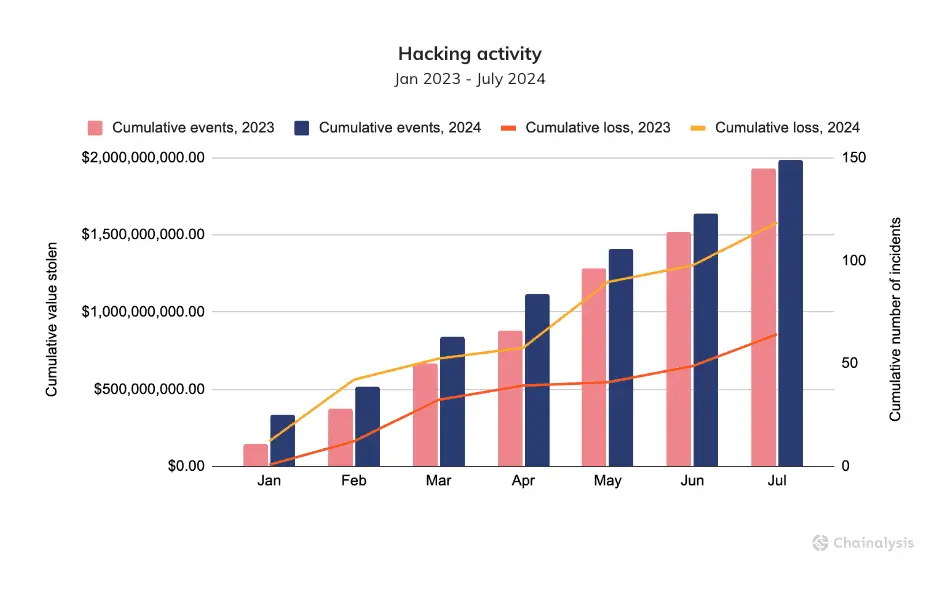
According to a new report, ransomware victims paid over $459 million to attackers in the first half of 2024. This staggering figure underscores the escalating cybersecurity crisis affecting organizations of all types—from large corporations to local governments and hospitals.
Blockchain analysis firm Chainalysis tracked cryptocurrency payments sent to wallets controlled by ransomware groups. The findings revealed a $10 million increase in the amount extorted by criminals compared to last year’s figure of $449.1 million.
Analysts note that the current payment trajectory is confidently steering the world toward the worst year on record. Other statistics further indicate the worsening situation. In addition to a new record ransom of $75 million confirmed by other blockchain analysts, the median payment amount has also risen.
For the most dangerous groups—those that received a maximum payment exceeding $1 million this year—the median ransom increased from $198,939 in the first week of 2023 to $1.5 million by mid-June 2024.
Experts suggest that this trend may indicate that such malicious software is beginning to target larger enterprises and critical infrastructure providers. Large corporations are more likely to comply with hackers’ demands due to their significant financial resources and systemic importance.
Chainalysis data aligns with information gathered by other companies. For instance, Sophos recently released a report showing that the median payment for 49 state and local government entities that paid a ransom in 2024 was $2.2 million.
Payment tracking also revealed that ransomware attacks are becoming more frequent—with at least 10% more incidents recorded this year compared to the previous period.
However, despite the increase in attack frequency and payment amounts, it appears that victims are 27% less likely to capitulate to criminals. Andrew Davis, general counsel at Kiva Consulting, reported that in 65% of the cases they handled recently, companies chose to recover on their own.
Davis added that law enforcement actions against the ALPHV/BlackCat and LockBit groups have led to a fragmentation of the cybercrime landscape. This has forced their affiliates to resort to less effective malware or to develop their own.
According to Davis, a large number of new groups with enhanced methods and tools have entered the fray. They are expanding their means of initial access and refining their lateral movement techniques within victims’ networks.
Chainalysis also warns of a rise in cryptocurrency thefts. In the first half of 2024, cybercriminals netted nearly $1.6 billion from such operations, significantly surpassing the $857 million recorded during the same period in 2023. Although the number of attacks on cryptocurrency platforms remained relatively stable, hackers have been stealing more money per incident. The average theft value increased to $10.6 million this year, compared to $5.9 million in the first half of the previous year.
Related Posts:
- Zscaler Report: 300% increase in phishing attacks delivered over SSL
- New Ducktail Malware Campaign Uses Delphi to Steal Facebook Business Accounts
- Cybercriminals have been earned over $16 million by distributing ransomware for 2 years